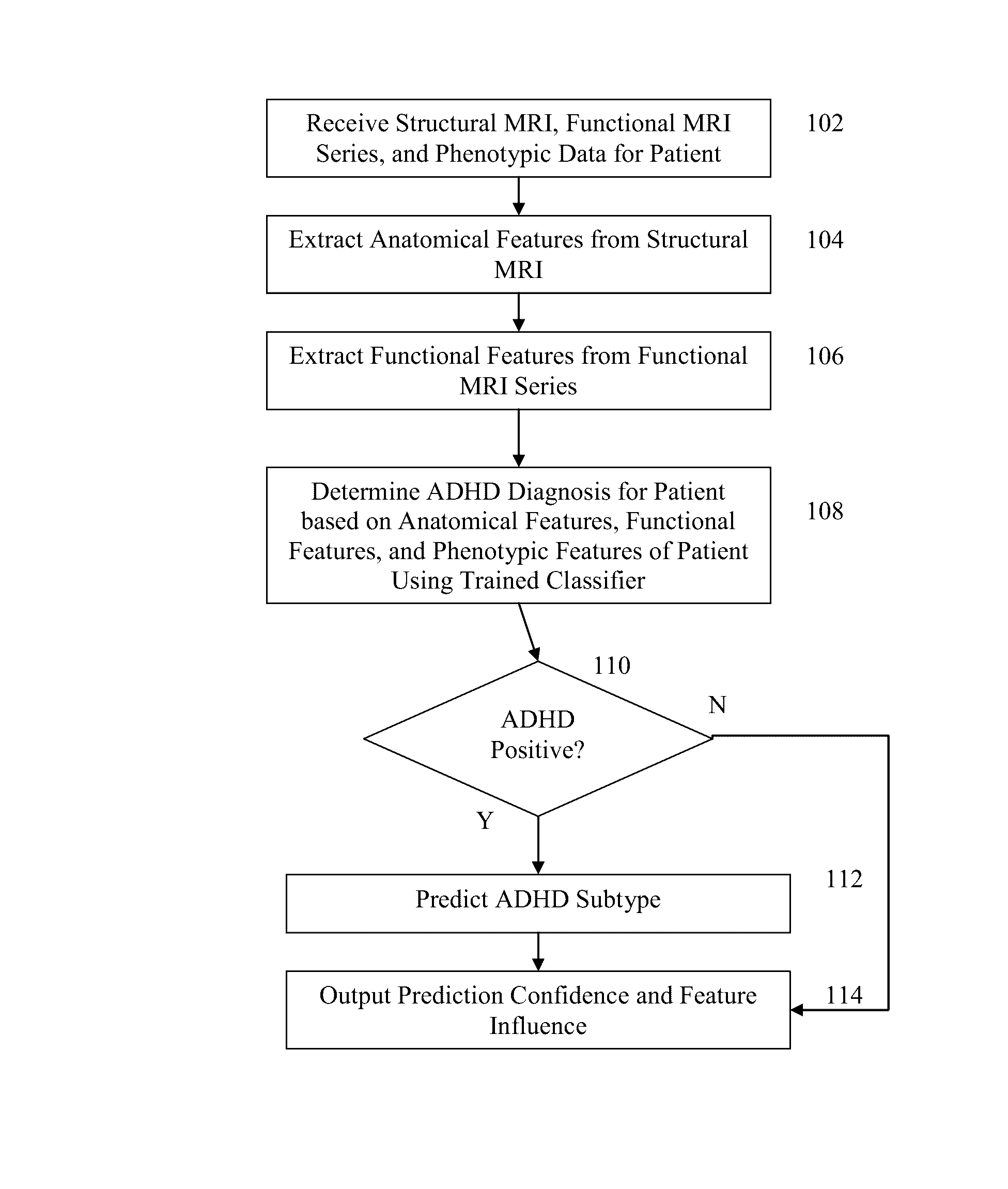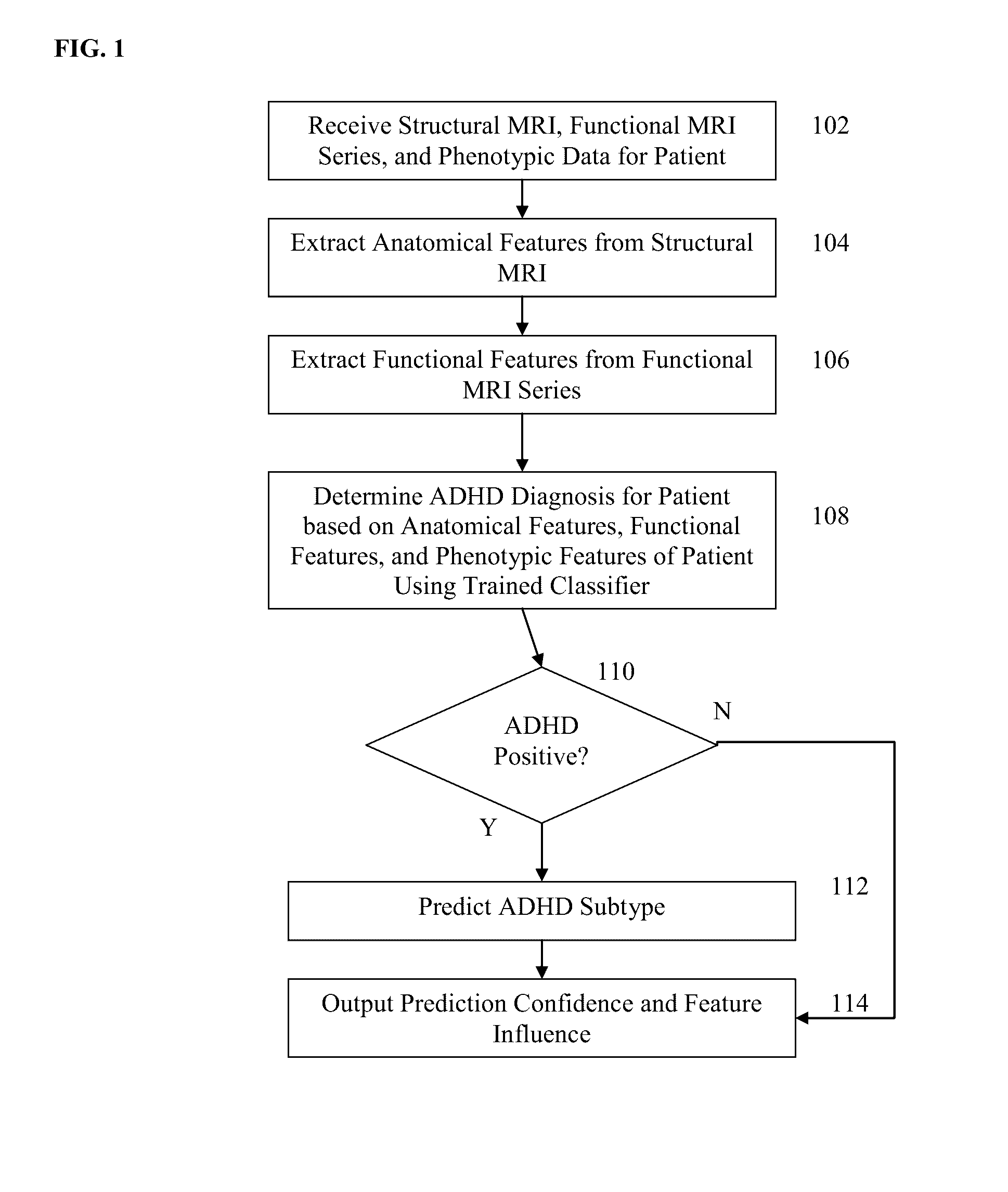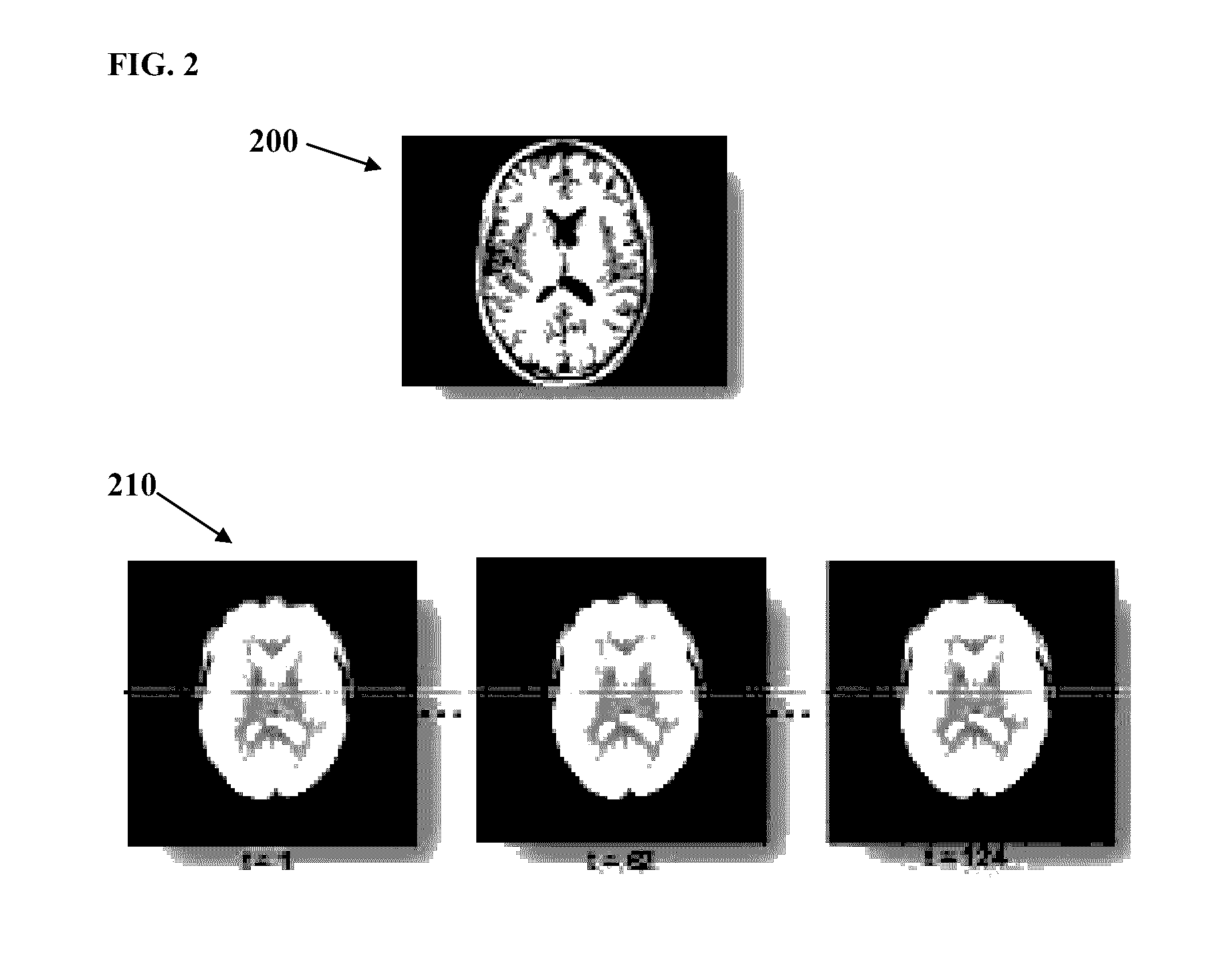Method and system for diagnosis of attention deficit hyperactivity disorder from magnetic resonance images
a magnetic resonance image and hyperactivity disorder technology, applied in the direction of image enhancement, instruments, measurements using nmr, etc., can solve the problems of difficult accurate diagnosis and controversial treatmen
- Summary
- Abstract
- Description
- Claims
- Application Information
AI Technical Summary
Benefits of technology
Problems solved by technology
Method used
Image
Examples
Embodiment Construction
[0015]The present invention relates to a method and system for diagnosis of attention deficit hyperactivity disorder (ADHD) from magnetic resonance images (MRI). A digital image is often composed of digital representations of one or more objects (or shapes). The digital representation of an object is often described herein in terms of identifying and manipulating the objects. Such manipulations are virtual manipulations accomplished in the memory or other circuitry / hardware of a computer system. Accordingly, is to be understood that embodiments of the present invention may be performed within a computer system using data stored within the computer system.
[0016]FIG. 1 illustrates a method for diagnosis of ADHD according to an embodiment of the present invention. The method of FIG. 1 transforms medical image data representing a patient's brain to extract a large number of features from the medical image data and determines a diagnosis of the patient based on the extracted features usi...
PUM
 Login to View More
Login to View More Abstract
Description
Claims
Application Information
 Login to View More
Login to View More - R&D
- Intellectual Property
- Life Sciences
- Materials
- Tech Scout
- Unparalleled Data Quality
- Higher Quality Content
- 60% Fewer Hallucinations
Browse by: Latest US Patents, China's latest patents, Technical Efficacy Thesaurus, Application Domain, Technology Topic, Popular Technical Reports.
© 2025 PatSnap. All rights reserved.Legal|Privacy policy|Modern Slavery Act Transparency Statement|Sitemap|About US| Contact US: help@patsnap.com



